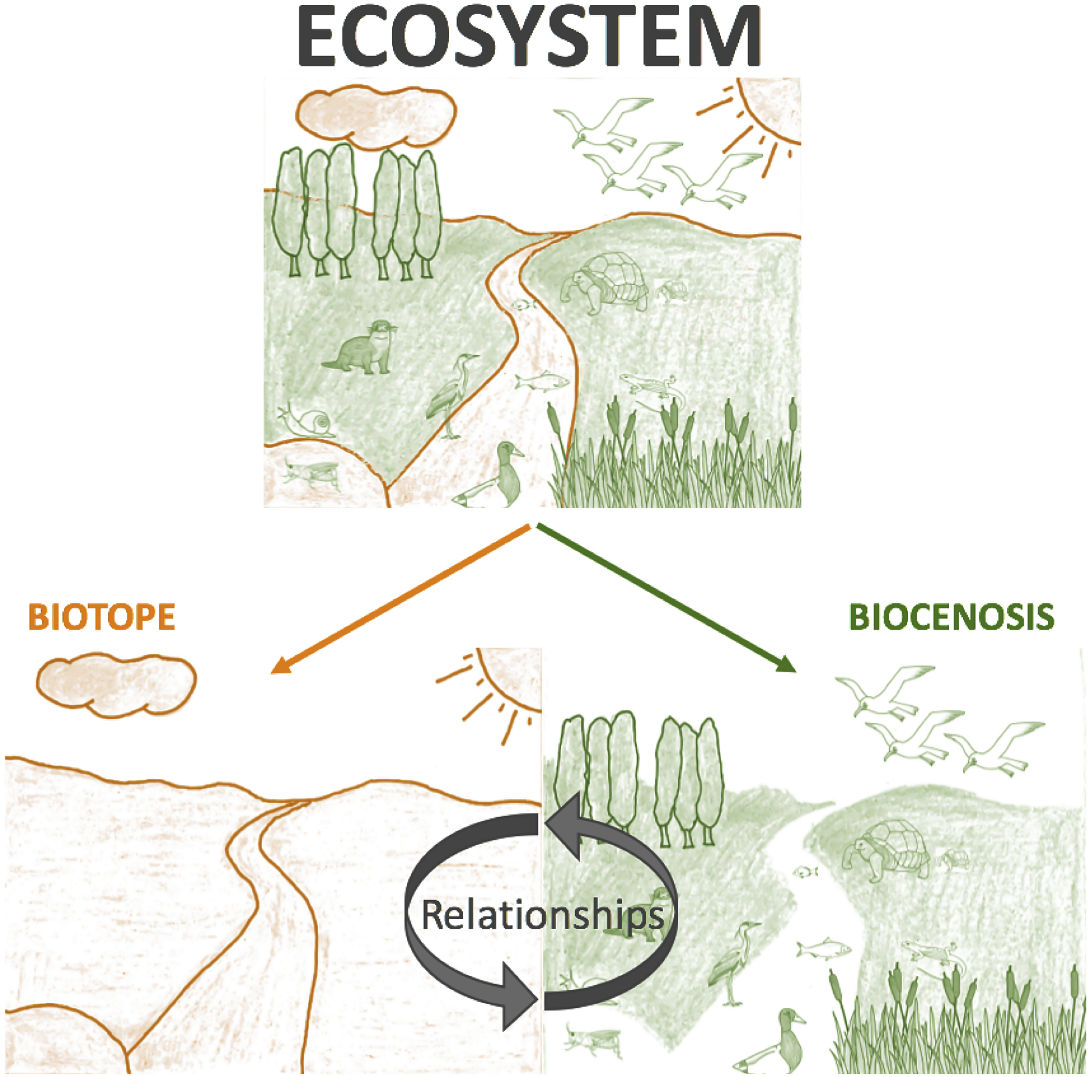Biology and Geology.Teoría,
actividades y prácticas de laboratorio. 1º ESO Programa SELE • María
del Mar Vera Sánchez
Contents and activities
UNIT 10. Ecosystems
10.1. GENERAL CHARACTERISTICS OF ECOSYSTEMS

Biotope is the inert part of the ecosystem formed by:
|
Biocenosis is the living part of the ecosystem formed by the set of living beings (animals, plants, fungi, protoctists and bacteria). They are known as biotic factors. |
An ecosystem, therefore, consists of 3 elements:
- 1. BIOTOPE: it includes the physical components and conditions of an ecosystem.
- 2. BIOCENOSIS: it is the collection of organisms which lives in an ecosystem.
- 3. RELATIONSHIPS: the living beings of an ecosystem are related to each other and to the physical environment.
Ecosystems can be very diverse:
- They can be aquatic (e.g. a river) and terrestrial (e.g. a field).
- They can be small and with well-defined limits, like for example, a lake, and they can be large and with undefined limits such as an ocean or a forest.
BIOMES are large geographical areas with similar climatic conditions that have similar ecosystems too.
The ECOSPHERE is formed by all ecosystems of the Earth.
 PRÁCTICA DE LABORATORIO Nº 13:
Red trófica de un lago.
PRÁCTICA DE LABORATORIO Nº 13:
Red trófica de un lago.
 YouTube: Lincoln Learning Solutions “Earth’s Interconnected Cycles”
YouTube: Lincoln Learning Solutions “Earth’s Interconnected Cycles”
